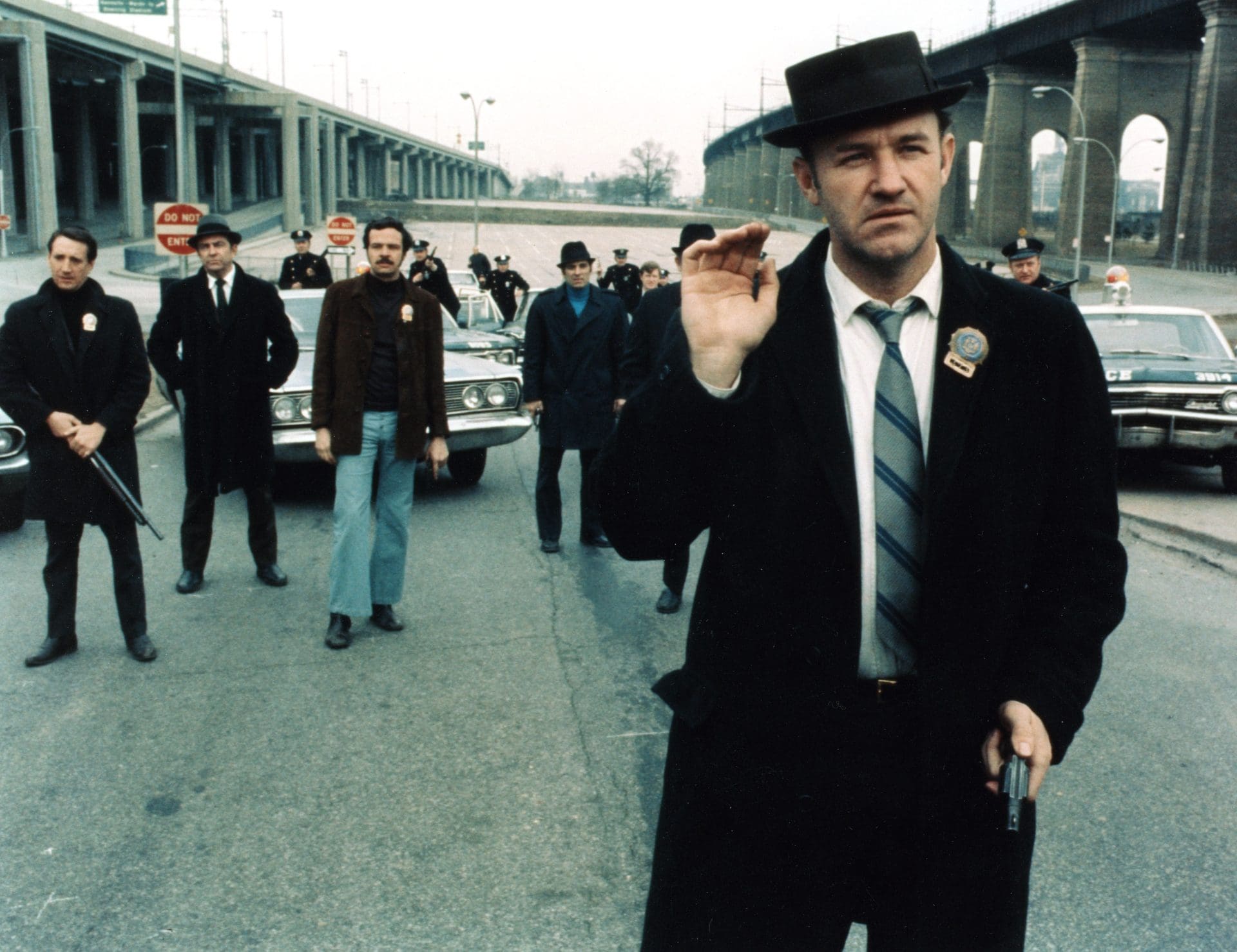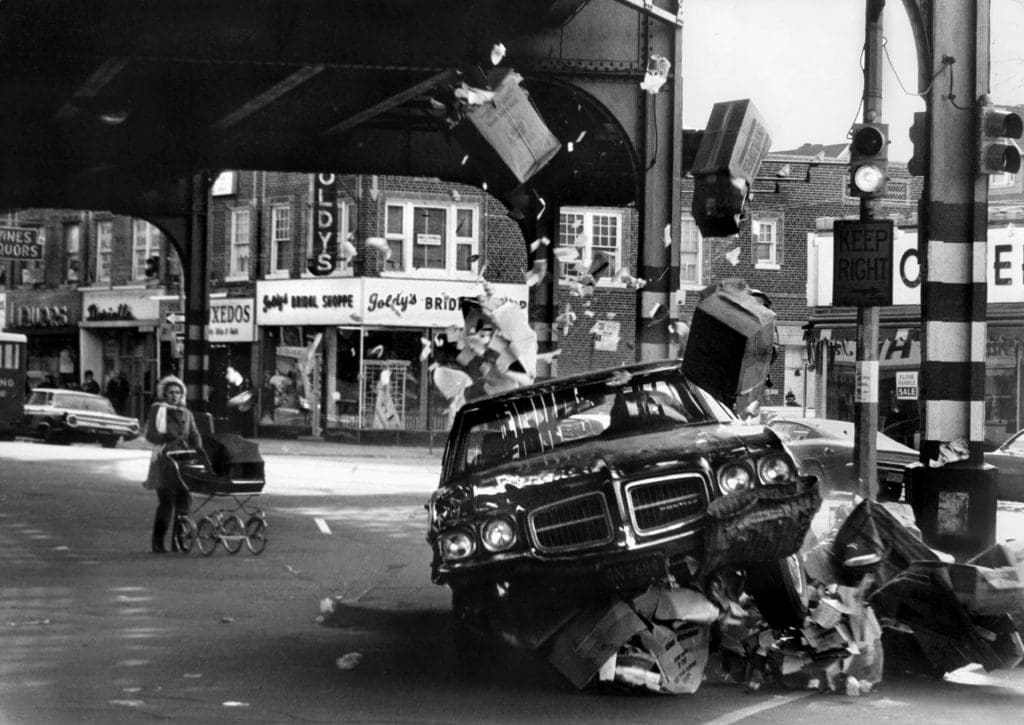
Cinema is the art of the moving image, and the intimate relationship between vehicles and the seventh art goes at least as far back as the Lumières brothers’ The Arrival of a Train at La Ciotat Station (1895). Each image in a film always leads to another (except of course for the last one), but few filmmakers have made use of the inherently propulsive quality of the medium the way William Friedkin did.
Much of the tension in 1977’s Sorcerer derives from a need for speed that is frustrated. Roy Scheider and his partners in crime are literally forced to drive their large truck very slowly, lest the vibrations from the uneven terrain make the unstable dynamite they are transporting explode. But in 1985’s To Live and Die in L.A., William Petersen’s unhinged Secret Service agent gives full rein to his most reckless impulses, in a clear echo of Gene Hackman’s Jimmy “Popeye” Doyle from 1971’s The French Connection. Both men have a reputation for impatient and violent behaviour, and both films feature stunning car chases that have become part of film history.
But Popeye, despite his short fuse, is a lot more rational than his 1980s counterpart. In some sense, The French Connection seems to navigate both extremes of stillness and movement, and to contain within itself the seeds that would later give the two other films. Popeye and his partner Buddy “Cloudy” Russo (Roy Scheider) spend much of their time in stationary cars, trying not to be seen by their targets—vigilance is in order—but at other times, they must act quick and put the pedal to the metal.
However the film’s relationship to cars is much more nuanced than this may suggest. Taking place largely in New York City, few are the moments in the film where the sound of traffic isn’t part of its rich soundscape—which makes the scenes set in Marseilles, on the sea front and among large cargo ships, stand out all the more. Cars are part of the fabric of the town, of the film—and of Popeye himself. Both detectives are good at their job, but Hackman’s is completely obsessed with catching bad guys, and utterly unable to ever take a break. Hanging out with Cloudy in a bar for a drink after work, he spots mobsters spending a lot of cash and suggests tailing one of them, “just for fun”—as though he was simply looking for an excuse to get back into his car and back to work. Parked opposite a target or a suspicious building, he will spend hours upon hours in the vehicle, to the point where it becomes his living space. In fact, he seems more at home there than in the cramped apartment Cloudy finds him in later on and which seems more like a place to crash after a long day of police work than a place to live. It almost feels fated, then, that the drug traffickers he is after are using a car to bring in their precious merchandise from France. At least on a movie-logic or existential level, this makes Popeye the ideal person to go after these criminals, even if his boss and his uncooperative colleagues from the FBI certainly do not approve of him and his methods. It is fascinating to watch a character apparently enjoy the utterly boring work of tailing suspects, the way Popeye apparently does; it’s breathtaking to see him get the car into action.
The French Connection ‘s infamous 10-minutes-long chase scene between Popeye and French hitman Pierre Nicoli (Marcel Bozzuffi) begins with the horrific murder of a woman in the sniper’s line of fire, and takes place on foot before Popeye requisitions a civilian’s car at gunpoint. There, he truly becomes one with the vehicle, the hum of the engine and the screeching of the tires filling the entire audio space and muting his own shouts. Avoiding the pitfall of many other car chases, Friedkin and director of photography Owen Roizman do not lean into the smoothness of high speed driving, which is commonly associated with good driving on screen but is often quite boring to watch. Instead, the low camera angle, the slightly accelerated footage and the unintentional accidents that Friedkin chose to leave in the final film emphasise the adrenaline coursing through the driver’s body. Popeye is driving a straight line under the elevated train his enemy is in, but the many obstacles on his way force him to not go at full speed (unlike Petersen’s character in To Live and Die in L.A., who does not obey much logic at all during his iconic car chase).

In this way, Friedkin and Roizman manage to highlight Popeye’s abilities at the wheel even as his behaviour could be described as reckless. Although he puts himself and others in danger, it’s a danger he does not ignore—on the contrary, he navigates it, with largely positive results. In that sense, the car chase and Popeye’s relationship to his car in general are an echo to his complex, unorthodox methods as a policeman. The French Connection can be enjoyed as a straight-up cat-and-mouse story of cops and villains, but Friedkin’s real talent lay in exposing what truly makes his characters tick in such an organic way that while we’re watching a car speed up under a bridge, we’re also seeing somebody’s soul.
If you liked this piece, check out our other essays about the cinema of William Friedkin.





